This summer, MedicalExpo e-magazine is republishing ten of its most popular articles—an opportunity to review the cutting-edge innovations and digital technology that have made an impact in several healthcare sectors this year. Here is article #10 in chronological order:
In today’s world, many in medicine see Laboratory 4.0 as the ultimate goal in the drive for high levels of accuracy, efficiency and cost-effectiveness, as well as wider care delivery. Progress is already being made. Smarter labs, with increasing levels of connectivity, automation and digitalization are making their presence felt.
(Published on June 23, 2022)
Sandosh Padmanabhan, Professor of Cardiovascular Genomics and Therapeutics, University of Glasgow, said:
“We moved first to centralizing laboratories, which allowed the concentration of state-of-the-art technologies and expertise while providing economies of scale. This also allowed digitalization by adopting digital infrastructure to increase efficiency, collaboration and transparency. The first evidence of this transition was the paperless labs and automation to minimize manual repetitive processes.”
According to him, progress has been steady since then. This is partly because issues of ethics, law and privacy must always be central to any technological development within medicine. He observed:
“In clinical decision making, laboratory sciences offer up to 70% of information required and this is mostly invisible at the point of care. In many conditions, the return of accurate results is critical, and this is where clinicians and patients are seeing the advantages of digitalization.”
1/ Nordic Bioscience (Denmark)
Danish Nordic Bioscience started digitalization and automation two years ago. The company works with the world’s top 50 biotech and pharma companies, using its unique Protein Fingerprint biomarker technology in chronic disease for diagnosis and prognosis to enrich clinical trials and aid precision medicine development.

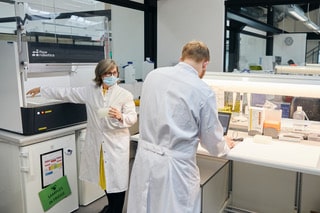
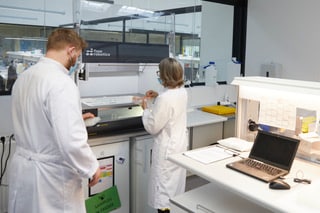
Dr. Tina Manon-Jensen, Chief Laboratory Officer, said:
“Our lab is responsible for measuring blood samples in clinical and preclinical trials with proprietary biomarkers as well as regular safety testing. We are committed to the highest level of data quality. This is because we know that at the end of the process, there is a human being who relies on the data being accurate and of high quality. And the more digitalization we have, the more accurate we are able to make our data recordings.”
On its journey to Laboratory 4.0, Nordic Bioscience introduced the liquid handling flowbot ONE from Flow Robotics, also based in Denmark, to its lab. This has not only seen accuracy levels reach 99.9% but has also reduced injuries among technicians and improved speed of workflow, explained Kishwar Musa, Project Director, Clinical Laboratory.

According to Annika Issakson, CEO, Flow Robotics, the robot is integrated into pipetting routines in labs across Europe, the US and Australia, including PCR testing during the Covid-19 pandemic. She explained:
“The flowbot ONE has a patented augmented reality system which, for example, recognizes which components you add to the work deck. This makes it easy to switch between multiple applications. We have also opened up the robot’s Application Programming Interface (API) so it can be integrated with other automation systems, such as robot arms.
The advantage of flowbot ONE compared to others is the user-friendliness of the software, which makes it possible for the lab technicians to set up protocols on their own.”
Indeed, any development towards Laboratory 4.0 must include user-friendly solutions. Ms. Musa stressed:
“It is essential to have a lab where everything is efficient and the workflow is seamless.”
Dr Manon-Jensen from Nordic Bioscience agreed:
“It is important to pick the right equipment because there is rarely a second chance. Also, anything we put in the laboratory must fit with the rest of our system, otherwise, we run the risk of delivering inaccurate results, which could ultimately impact the patient.”
2/ Labcorp (USA)
Other leading labs include US-headquartered Labcorp, a global life sciences company with diagnostics and drug development capabilities serving clients in more than 100 countries.
Using robotics, it increased its Covid-19 testing capacity and developed proprietary insight and analytics capabilities early in the pandemic.
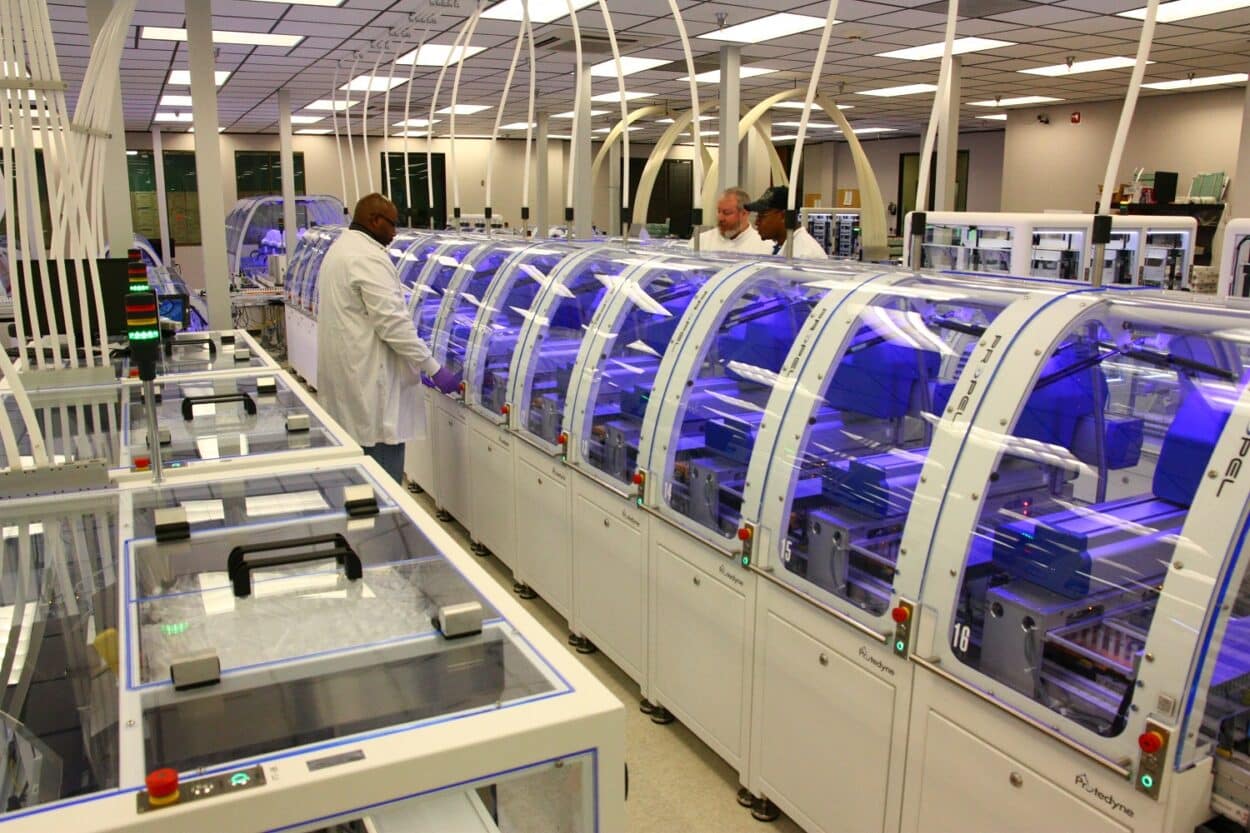
Adam Schechter, chairman and CEO, said:
“Our innovations in testing, clinical trial delivery, technology, and insights have enabled us to deliver trusted, timely information to physicians, biopharmaceutical companies, and patients, so they can make clear and confident decisions.”
3/ Sonic Healthcare (Australia)
Australian Sonic Healthcare is another of the world’s leading providers of medical diagnostics, focusing on laboratory medicine across Australasia, Europe and North America. A keen proponent of the digitalization of workflow within its laboratories, it has seen numerous recent successes in moving towards Laboratory 4.0.
Among these are the achievements of one of its companies, Sullivan Nicolaides Pathology (SNP), which introduced the Philips IntelliSite Pathology Solution. This aims to enhance productivity with high-resolution digital images, rapid scanning and sharing of images of tissue slides across locations.
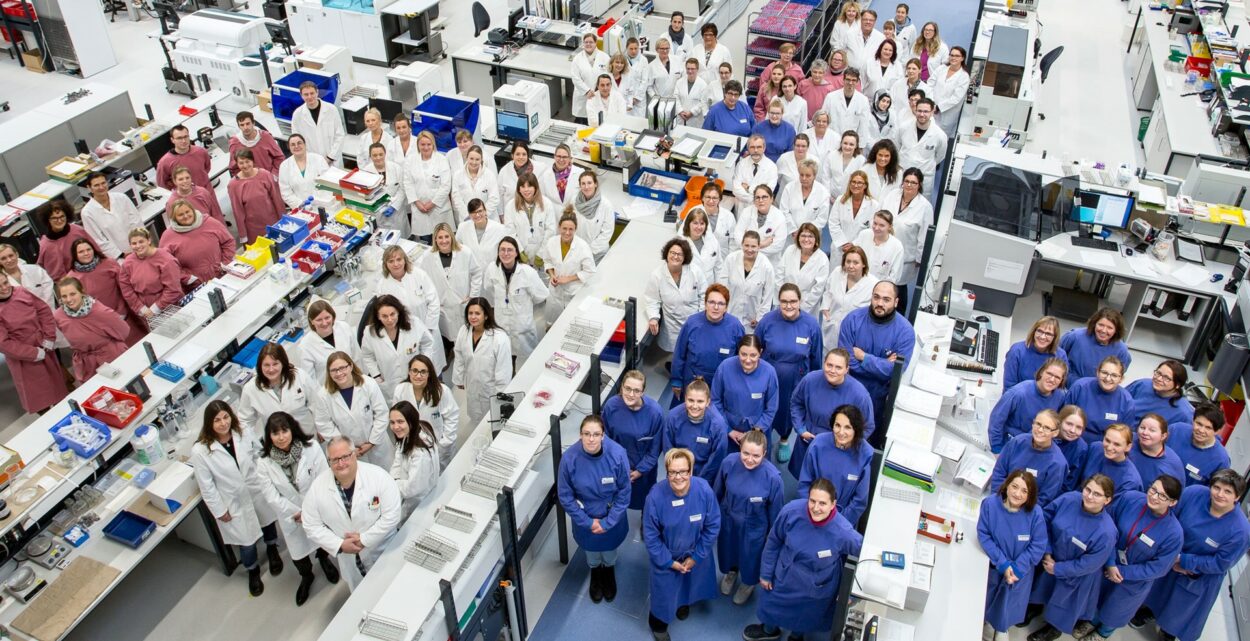
Dr. Mark Wyche, Histopathologist at SNP, said:
“Digital pathology has enhanced our practice with an improved workflow that helps to speed up diagnostic turnaround times for patients.”
4/ Synlab (Germany)
German SYNLAB, a leading European provider of laboratory diagnostic services, also regards the digitalization of its processes as essential.
One of its many successes in driving toward Laboratory 4.0 can be seen in its Spanish Molecular Genetics Department, where the lab was the first in Europe to develop a non-invasive prenatal genetic test (NIPT).

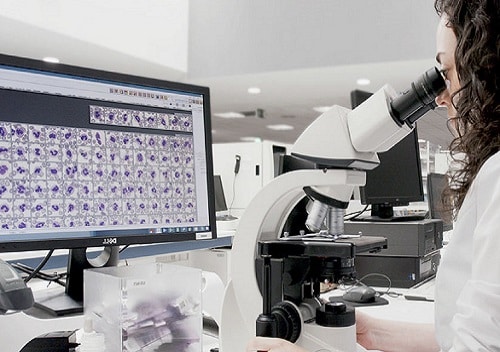
This lab has state-of-the-art technology for genetic diagnostic analysis. It is characterized by a high degree of workflow automation, with several robotics platforms.
These optimize performance by accurately processing a large number of samples and minimizing the risk of cross-contamination.
5/ Myriad Genetics (USA)
Myriad Genetics has genetic testing and molecular diagnostics labs in various US locations, including South San Francisco. Kevin Haas, Chief Technology Officer, said:
“The creation of software to support lab automation has led to a fully automated lab where hundreds of robots orchestrate themselves to do most sample processing, freeing team members to work on refinement and new product advancement, rather than physical manipulation.
This represents the evolution and adoption of the industrialization of genetics.”

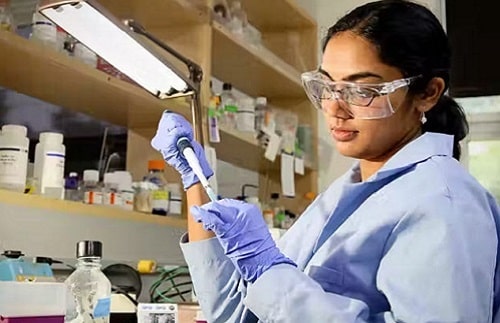
The company develops and commercializes genetic tests that help assess the risk of developing disease or disease progression and guide treatment decisions. Its core areas of focus are women’s health, oncology and mental health. He added:
“The lab’s advanced robotics and instrumentation were customized by Myriad Genetics engineers, processing thousands of clinical samples 24 hours every day. A typical running work cell is made up of 300 instruments and 500 software programs.”
Laboratory 4.0—A Moving Target
Dr. Manon-Jensen from Nordic Bioscience said Laboratory 4.0 is a moving target. She suggested:
“At Nordic Bioscience we started aiming for full digitalization two years ago, but I think it will be a never ending story. You should never think you are done with automation—the world is turning around very fast.”
And Prof Padmanabhan from the University of Glasgow underlined the importance of the digitalization of the medical lab for the wider benefit of global healthcare. He stressed:
“A lot of work is going on in this space and we will see major advances over the next five years that will transform the delivery of healthcare.
The focus will be on the front-end of care delivery. But this will not have reached that stage without the progress in laboratory digitalization that is already happening or has happened in the background.”











